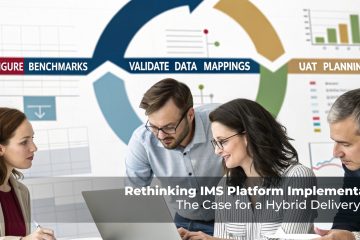Market abuse is a growing concern and several recent incidents have highlighted the critical need for stronger trade surveillance to combat market abuse and meet compliance standards within the trading sector.
The most recent example is JPMorgan Chase & Co. being fined $348 million over its inadequate program to monitor firm and client trading activities for market misconduct by the OCC and Federal Reserve.
Others include – Goldman Sachs paid a $4 million penalty for failing to diligently supervise a range of its swap dealer activities (aka “spoofing”). Credit Suisse’s $6.5 million fine for compliance failures that included insufficient surveillance on the trading of volatile stocks. Morgan Stanley being fined $10 million because their AML tech was not up to par. These deficiencies allowed for manipulative trading practices to go undetected. In light of this regulatory action, financial institutions are increasingly recognizing the critical need for robust Trade Surveillance Solutions.
Pushing Trading Surveillance Up the Agenda
The importance of elevating trade surveillance to a top-tier priority is clear. The fines levied against these Juggernauts of the financial world are stark indicators of the need for systems that not only detect but predict market manipulations.
The recent punitive actions taken highlights the need to change how surveillance is perceived and implemented. The goal extends beyond merely avoiding fines; it’s fundamentally about proactive risk management and maintaining market integrity. We are at the cusp of a transformation from reactive compliance models to proactive, sophisticated surveillance solutions.
Unveiling Effective Compliance: The Role of Integrated Systems
Real-time data analysis has transformed trade surveillance from a retrospective, compliance-checking activity into a dynamic risk management tool. For instance, NASDAQ’s SMARTS, a surveillance technology used by over 50 exchanges and regulators globally, leverages real-time analytics to monitor millions of transactions daily. This system provides immediate alerts on unusual trading patterns, enabling quicker interventions and reducing potential market abuse.The significance of integrating surveillance systems is well illustrated by the 2010 “Flash Crash,” where fragmented data streams contributed to a drastic, rapid market plunge. Today, an integrated surveillance framework can offer a holistic view across various trading platforms, improving the detection of complex fraudulent schemes that operate across multiple assets or markets.
Breaking Down Barriers: The Downfall of Data Silos
Siloed data impedes the ability to view comprehensive trading activities, making it difficult to detect sophisticated schemes that span multiple markets or assets. An integrated approach enhances visibility. It also improves the efficiency of regulatory compliance, ensuring potential issues are identified and addressed swiftly. Moreover, the ability to perform real-time analysis allows firms to react immediately to suspicious activities, mitigating risks more effectively.
Real-time analysis is becoming a key tool with its widespread adoption across industries. Firms need to bank on real-time analytics not only to monitor transactions but also to offer immediate responses to suspicious activities, significantly reducing potential risks.
Comprehensive Considerations in Trade Surveillance and Monitoring Systems
- Data Privacy, Security, and Cybersecurity: Ensuring data privacy, protection, and cybersecurity is paramount in trade surveillance. Strategies encompass encryption techniques, access controls, GDPR compliance, and data anonymization to safeguard sensitive information.
- Regulatory Landscape and Compliance Framework: Many regulatory frameworks such as MiFID II, Dodd-Frank, and global standards like FATF have set the stage for stringent compliance requirements in trade surveillance. To safeguard their operations and avoid severe penalties, firms must rigorously adhere to these regulatory frameworks through precise and timely compliance reporting.
- Operational Challenges and Best Practices: Implementing surveillance systems comes with operational challenges. Best practices include data quality management, system integration, and continuous improvement to ensure optimal performance.
Features of Modern Surveillance Systems
- Dashboards
The Dashboard is essentially mission control for trading activities, highlighting potential risks and compliance red flags. It’s not just about tracking numbers; it’s about deriving actionable insights through visualizations and alerts. By integrating key metrics and intuitive visuals, dashboards empower firms to spot and act on deviations quickly.
- Automation
Automation streamlines the process from detection to resolution. It categorizes alerts by severity, assigns them to the appropriate team, and tracks progress until closure. This ensures that each alert is handled with the urgency and precision it requires. Automation enhances the effectiveness of the trade surveillance system. It enables the firm to uphold regulatory compliance and market integrity with enhanced accuracy. These technologies enable us to refine our alert systems, reducing false positives and focusing our human capital on the most pressing issues.
- Continuous Analysis
The landscape of compliance demands vigilance – there’s no room for a “set and forget” mentality. Continuous analysis is powered by sophisticated algorithms. This ensures that surveillance systems stay ahead of evolving market dynamics and regulatory changes, maintaining alignment with industry best practices.
- Battling Market(s) Abuse
Effective surveillance extends beyond the confines of any single market. Utilizing cross-market analysis, firms can uncover and counteract abuse schemes operating across diverse exchanges and platforms. This comprehensive monitoring, in conjunction with robust KYC/AML protocols, not only targets market abuse but also fortifies defenses against broader financial crimes.
- Adapting Surveillance
To stay at the forefront of trade surveillance, adaptation isn’t just an advantage – it’s a necessity. Embracing a fluid and dynamic strategy ensures the continuous evolution of surveillance systems and practices. This approach helps meet present and future challenges head-on with innovative solutions.
Our Take on the Future of Trade Surveillance
As we look ahead, the advancement in trade surveillance will be significantly driven by the integration of specific emerging technologies. AI and ML are set to play a pivotal role, particularly by analyzing complex trading patterns far beyond the capabilities of traditional systems. Blockchain is currently most famous for cryptocurrency, but with its ability to create a transparent and immutable ledger – this technology could revolutionize trade verification and audit processes.
In response to the evolving regulatory landscape, there’s a growing trend towards RegTech solutions that enable firms to meet compliance mandates more effectively and at a lower cost.
The future of trade surveillance is shaping up to be an intersection of cutting-edge technology and stringent regulatory compliance.
If you’re looking to navigate these complex challenges with a partner who understands the nuances, we’re here to help. Feel free to get in touch with us for a conversation about your specific needs.


